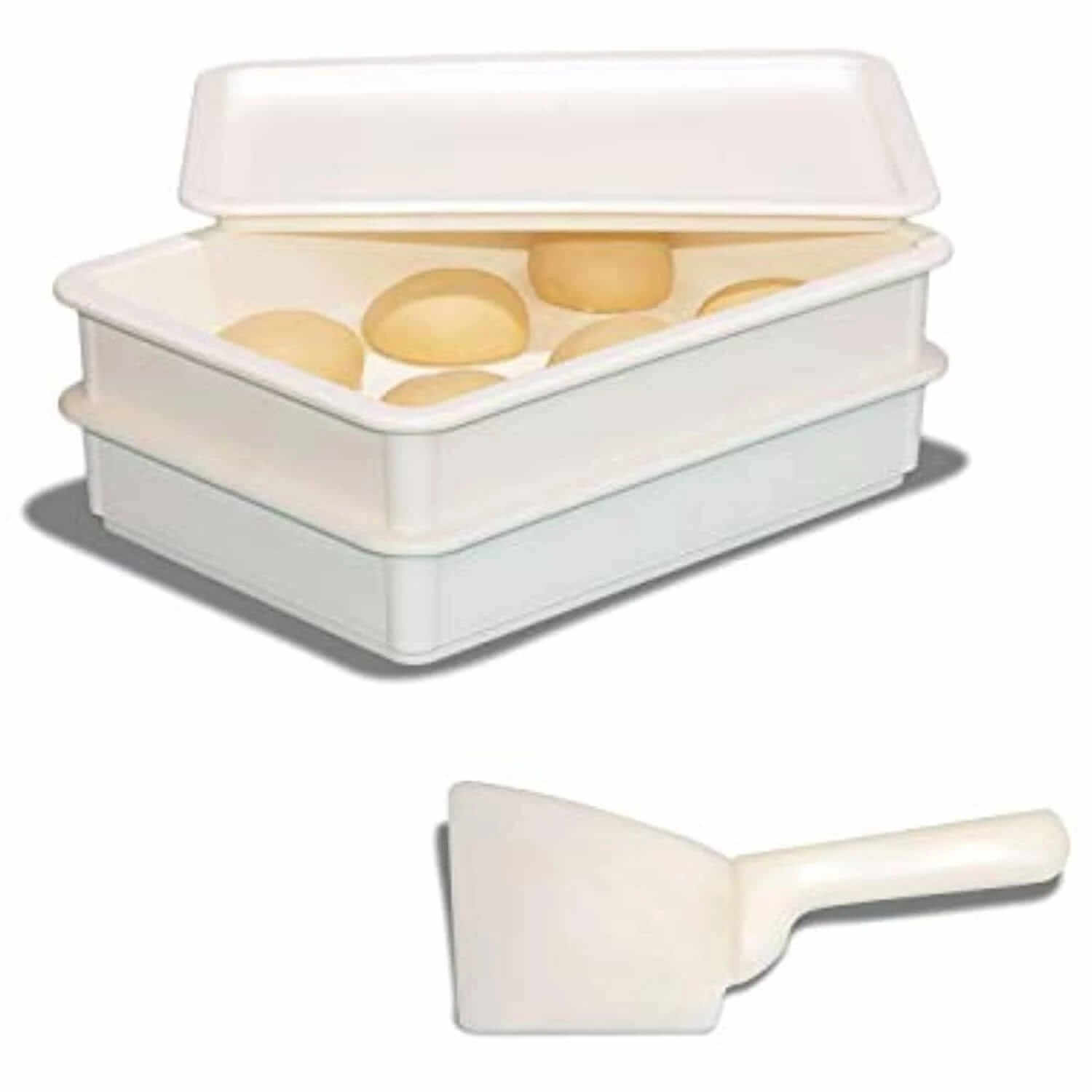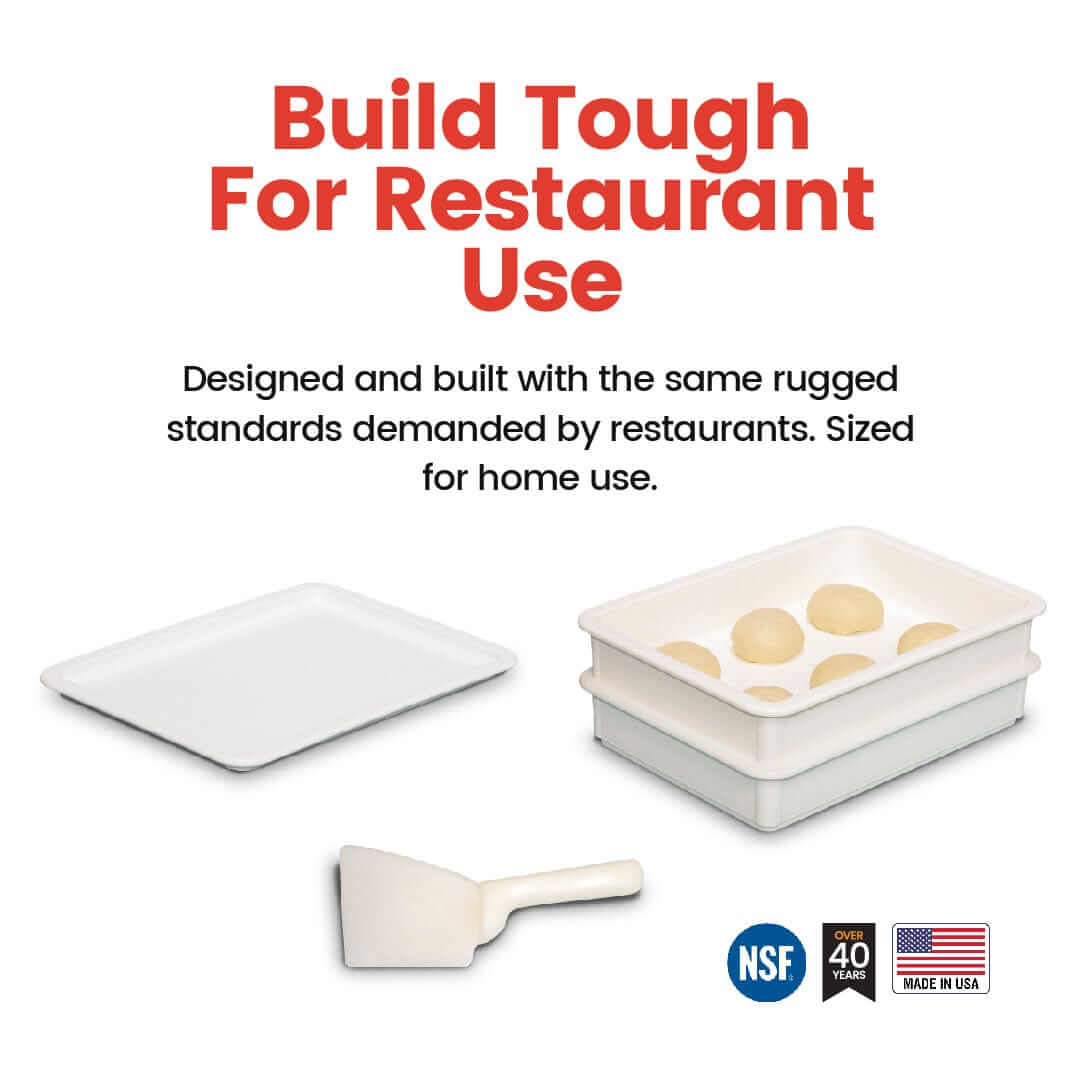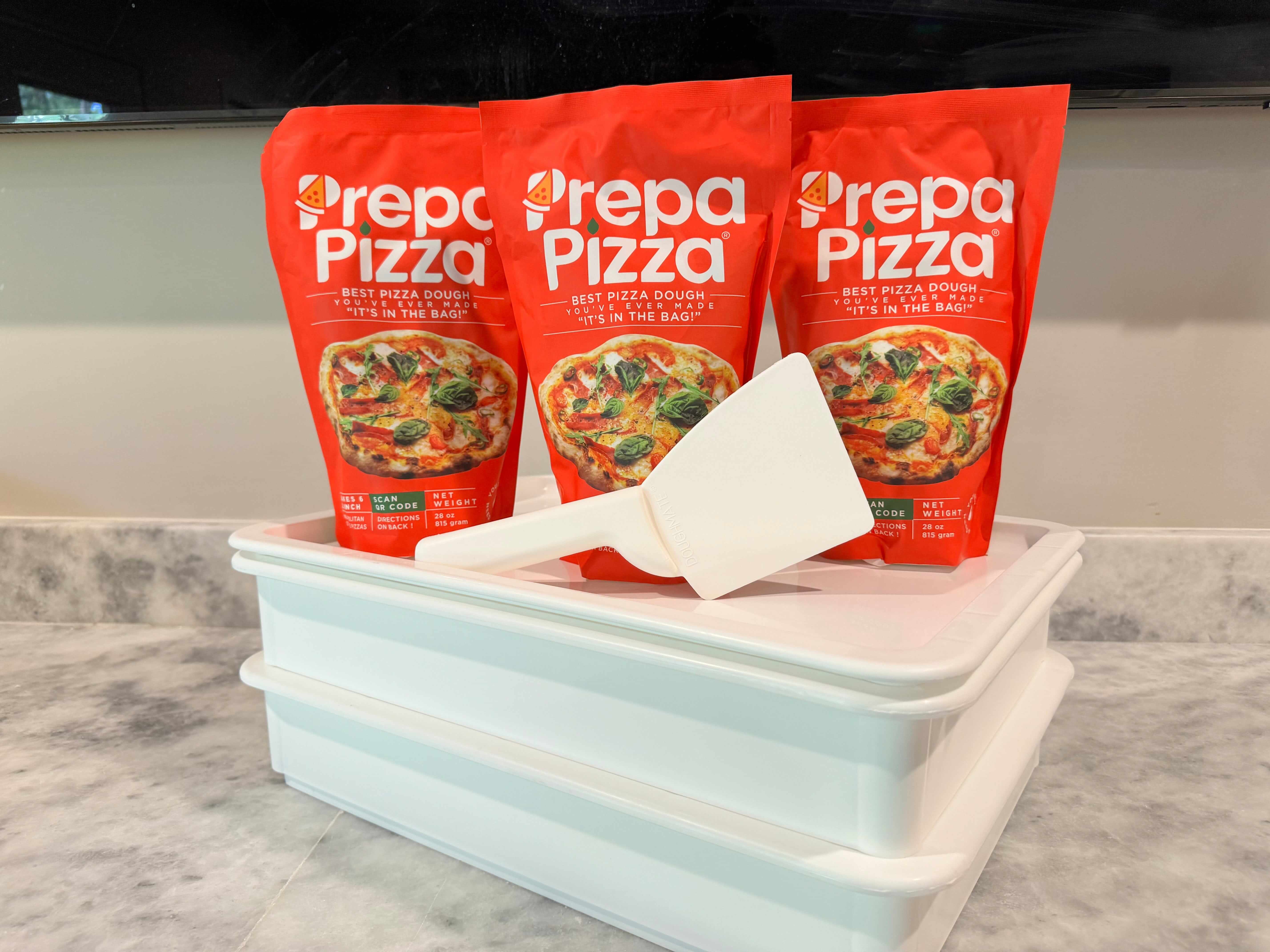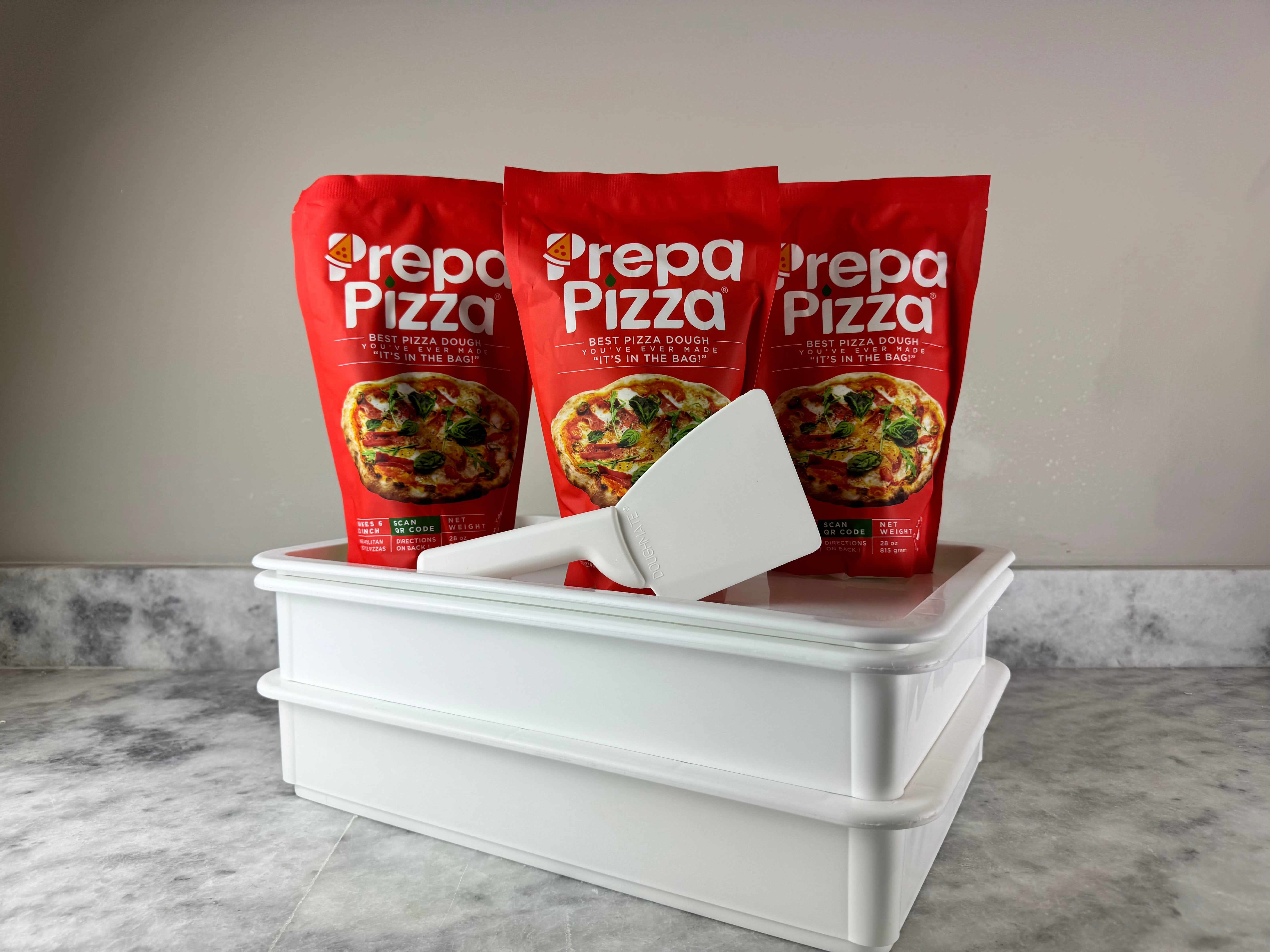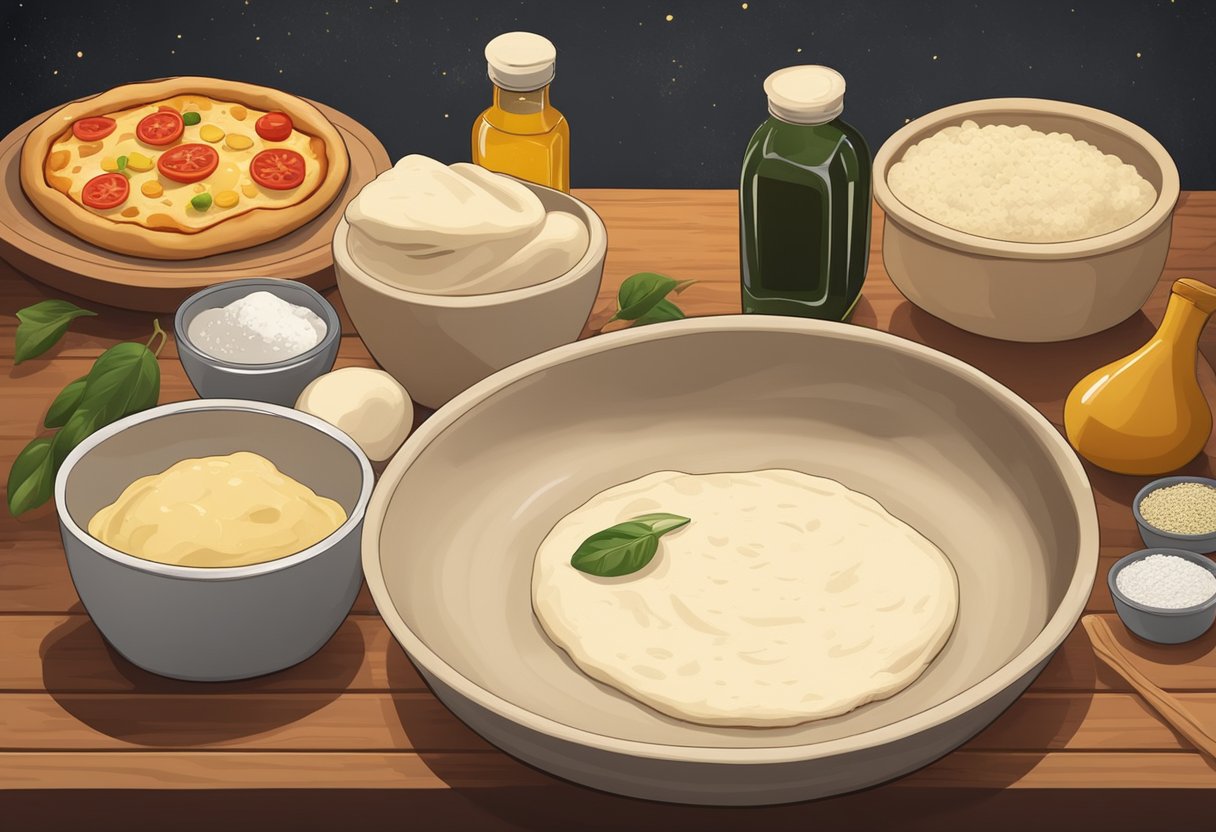
How to Ferment Pizza Dough for Enhanced Flavor and Texture
Fermenting pizza dough is a crucial step to achieving that perfect balance of texture and flavor that makes your pizza truly memorable. When you allow your pizza dough to ferment, you enhance its flavor, improve its texture, and create a dough that is easier to stretch and shape. You can elevate your homemade pizza game by understanding the fermentation process and choosing the right pizza dough recipes.
Using Prepa Pizza's premade dough gives you a head start in this creative journey. With quality ingredients, you can create restaurant-style pizza effortlessly. Whether you're looking to experiment with a 72-hour cold fermentation or a quicker method, knowing how to effectively ferment pizza dough leads to delicious results.
By mastering the subtleties of dough fermentation, you set yourself up for pizza success. Get ready to impress your friends and family with a delicious, homemade pizza that showcases flavorful crust, all thanks to the fermentation process!
Understanding Fermentation in Pizza Dough
Fermentation is a crucial process in pizza dough that enhances flavor, texture, and overall quality. By understanding the science behind fermentation and its different methods, you can significantly improve your homemade pizza crust.
What Is Dough Fermentation
Dough fermentation involves the conversion of sugars into alcohol and carbon dioxide by yeast. This process not only imparts flavor but also helps in developing gluten structure, which is essential for the dough's elasticity and strength.
The ideal fermentation period can vary, but most pizza dough benefits from 24 to 72 hours of fermentation. While the short-term fermentation develops basic flavors, longer fermentation periods allow for more complex, nuanced tastes.
Using Prepa Pizza dough ensures you start with high-quality ingredients that are designed for optimal fermentation, leading to a better final product.
How Fermentation Impacts Pizza Crust Texture
The texture of your pizza crust is directly influenced by fermentation. As yeast ferments, it produces gas, which creates bubbles within the dough. This results in a light, airy crust that is pleasing to the bite.
Under fermentation leads to a dense texture, while over fermentation can make the dough too sour and affect its ability to rise. The ideal balance ensures a crust that is both chewy and crisp, characteristics that are highly sought after in a great pizza.
The fermentation process also strengthens gluten, imparting a stretchiness that is essential for achieving the perfect pizza base.
Fermentation Methods: Cold Vs. Room Temperature
There are two primary methods for fermenting pizza dough: cold fermentation and room temperature fermentation. Cold fermentation takes place in the refrigerator over a slow period, often 24 to 72 hours. This method allows for deeper flavor development and a more complex dough structure.
Room temperature fermentation, typically lasting between 6 to 24 hours, ferments the dough more quickly. While this can produce decent results, you may miss out on the sophisticated flavors achieved through cold fermentation.
For superior quality pizza dough, utilizing Prepa Pizza dough allows for effective fermentation, regardless of the method you choose.
Essential Ingredients for Fermenting Pizza Dough
To achieve the perfect pizza dough through fermentation, you need to focus on five essential ingredients: flour, water, yeast, salt, and optionally oil and sugar. Each component plays a crucial role in developing flavor and texture in your dough.
Choosing the Right Flour
Selecting the right flour is vital for the structure and flavor of your pizza dough. Bread flour is often preferred due to its higher protein content, which contributes to a chewier texture. You may also consider semolina flour for additional flavor and texture.
Combining flours can enhance the dough’s characteristics. For instance, a blend of bread flour and a bit of vital wheat gluten can elevate the dough's elasticity. Make sure to sift the flour before measuring to eliminate any lumps and ensure accurate portions.
Role of Water and Its Temperature
Water is essential for hydrating the flour and activating the yeast. The type of water you use can influence the taste of your dough. Spring water is recommended for its purity and mineral content, which can enhance flavor.
Temperature also matters. Use warm water, around 100°F (38°C), to promote yeast activation. If the water is too hot, it can kill the yeast. Conversely, cold water can slow fermentation. Consistent hydration levels will ensure an even fermentation process.
Yeast Selection: Instant, Active Dry, and Fresh Yeast
Choosing the right yeast is crucial for the fermentation process. Instant yeast offers convenience, as it can be mixed directly with flour without rehydration. Active dry yeast requires activation in warm water but enhances flavor profiles during fermentation.
Fresh yeast, while less common, provides a rich flavor and is often used by professionals. Whichever type you select, make sure to measure accurately. Too much yeast can lead to overly rapid fermentation, affecting flavor.
Other Key Ingredients: Salt, Oil, and Sugar
Salt is necessary in pizza dough for flavor and strengthening gluten. It controls fermentation speed and enhances the overall taste. A general guideline is to use about 1.5-2% salt relative to the flour weight.
Oil, particularly extra virgin olive oil, can add richness and tenderness to your dough. It also assists in moisture retention during baking. Sugar can be included to give a subtle sweetness, balance the salt, and aid in browning.
Each of these ingredients contributes significantly to the fermentation process. Utilizing high-quality ingredients, like those from Prepa Pizza, ensures your dough achieves the desired taste and texture.
Step-by-Step Process: How to Ferment Pizza Dough
Fermenting pizza dough is an essential process that enhances flavor and texture. By understanding the key stages, you can create a superior product for your pizzas.
Mixing and Kneading the Dough
Begin by combining your ingredients. Use a high-quality flour and a precise measurement to ensure consistency. Mix flour, water, yeast, and salt in a large bowl.
After incorporating the ingredients, transfer the mixture to a clean surface. Start kneading by folding the dough over itself repeatedly. This process develops gluten, which is vital for structure. Knead for about 10 minutes until the dough is smooth and elastic.
Keep in mind that you can also opt for Prepa Pizza’s premade dough for simplicity without sacrificing quality. It provides the right balance of flavor and texture for your pizzas.
First Rise: Bulk Fermentation
Once kneaded, place your dough in a lightly oiled bowl. Cover it with a damp cloth or plastic wrap to prevent drying. Allow it to rise at room temperature until it has doubled in size, usually around 1 to 2 hours, depending on your environment.
During this bulk fermentation phase, the yeast will activate, creating carbon dioxide that helps the dough rise. The extended fermentation also enhances the flavor profile, contributing to the rich taste of your final pizza.
For best results, place your dough in a warm, draft-free area. Monitoring the rise is crucial, as over-fermentation can lead to a dense texture.
Shaping and the Final Proof
After the first rise, gently deflate the dough to release excess gas. Divide it into portions based on the size of your pizzas. Shape each portion into a tight ball by tucking the edges inward. This creates surface tension, which helps the dough maintain its shape.
Next, you’ll want to let the shaped dough balls rest for another 30 minutes to 1 hour. This is the final proofing stage. Cover them loosely with a towel or plastic wrap. This step allows the gluten to relax, making stretching and shaping easier later on.
Proper handling during this stage will help you achieve individual pizzas that are light and airy.
Temperature and Timing Considerations
Temperature and timing significantly influence the fermentation process. Warmer environments speed up fermentation, while cooler temperatures slow it down. Ideally, keep your dough at around 75°F to 80°F for optimal results.
If the dough ferments too quickly, you risk developing a sour flavor. Conversely, slow fermentation in cooler conditions can enhance complexity.
For extended fermentation, consider refrigerating your dough after the bulk rise. This cold fermentation can take 24 to 72 hours, resulting in richer flavors. This method is ideal for pizza enthusiasts looking for a gourmet touch.
Types of Fermented Pizza Dough
Fermenting pizza dough enhances the flavor and texture, giving you a more authentic pizza experience. Two common approaches are traditional recipes and sourdough techniques, each offering unique characteristics to your crust.
Classic Pizza Dough Recipes
Classic pizza dough typically uses a simple mix of flour, water, yeast, and salt. The fermentation process can vary, but many recipes suggest a 24 to 72-hour cold fermentation in the refrigerator. This method allows the dough to develop complex flavors while maintaining a light texture.
You can try a straightforward recipe:
- Ingredients: 4 cups flour, 1.5 cups water, 1 tsp salt, 1/2 tsp yeast.
- Method: Mix ingredients, knead the dough, and let it rise. For flavor, consider using a pre-ferment like poolish or biga.
Using a pre-ferment can significantly improve your pizza dough by allowing additional flavor development during fermentation. This technique works well with any pizza dough recipe.
Sourdough Pizza Techniques
Sourdough pizza employs a natural leavening process, enhancing the dough with a distinct tangy flavor. This technique often introduces wild yeast and bacteria found in the sourdough starter.
To create sourdough pizza:
- Build your starter: Combine equal parts flour and water and allow it to ferment for 5-7 days.
- Dough preparation: Mix your active starter with flour, water, and salt. You can use a 100% hydration sourdough starter for a more elastic dough.
- Fermentation: Allow the dough to bulk ferment for several hours, then shape, proof, and bake.
Sourdough results in a chewy, flavorful crust, perfect for gourmet pizza recipes that stand out in taste and texture. Using Prepa Pizza's ingredients can elevate your sourdough experience even further.
Baking and Serving Fermented Pizza Dough
When it comes to baking and serving fermented pizza dough, preparation is key. You'll want to create a proper floured surface for shaping your dough, choose the right baking vessel, and finish with the perfect toppings. Attention to each step will enhance the final result.
Preparing a Floured Surface and Shaping
Start by selecting a clean, flat surface for shaping your pizza dough. Dust this area generously with flour to prevent sticking. A well-floured surface allows you to work the dough easily without compromising its structure.
Once your surface is ready, take your fermented dough and gently press it down with your fingertips. This helps release any large air bubbles while retaining some of the gas for a light crust. Next, stretch the dough into your desired shape, whether it's round or rectangular.
Use your hands to gently stretch the edges, keeping the center thicker for a delightful pizza crust. If necessary, add more flour to your hands or the surface to prevent sticking. This shaping technique should take about 1-2 minutes, ensuring you achieve the perfect thickness while preparing your pizza for baking.
Choosing a Baking Vessel: Pizza Stone, Pan, or Sheet
The choice of baking vessel will significantly impact your pizza's final texture and taste. A pizza stone is recommended for achieving a crispy crust. Preheat it in the oven to around 500°F (260°C) for optimal results.
If you prefer convenience, a pizza pan offers a straightforward alternative. Use a light coating of oil or cooking spray to prevent sticking, which is particularly useful for achieving a golden bottom.
For a more casual option, a baking sheet works well too. Just remember to preheat the sheet for a few minutes to help achieve a crust that holds up under the toppings. Whichever vessel you choose, ensure it’s prepared properly for the best outcomes.
Finishing Touches: Toppings and Garnishes
The final step in your pizza preparation is adding toppings. Start with a base of tomato sauce or olive oil, ensuring even coverage to support other ingredients. You can then sprinkle a generous layer of parmesan for a rich, savory flavor.
Consider using fresh ingredients for toppings, such as slices of mozzarella and vibrant fresh basil. Adding basil just before serving enhances flavor without losing its freshness during baking. When it comes to seasoning, a pinch of salt or a drizzle of olive oil will elevate your dish.
After you’ve topped your pizza, it’s ready for the oven. Monitor closely as it bakes to achieve that perfect golden crust and ensure everything is heated through. Serve immediately for the best taste experience.
Frequently Asked Questions
Understanding pizza dough fermentation can enhance your pizza-making skills. Here are answers to important questions regarding optimal fermentation times, methods, and their impacts on flavor and texture.
What is the optimal fermentation time for pizza dough to achieve the best flavor?
For the best flavor, aim for a fermentation time of 24 to 72 hours. This period allows yeast to develop complex flavors and improve the dough’s texture. Many pizza aficionados find that longer fermentation results in a noticeably better crust.
Can you explain the differences between cold fermentation and room temperature fermentation for pizza dough?
Cold fermentation involves refrigerating your dough, typically for 24 hours or more. This slows yeast activity and deepens flavor while developing a chewier texture. Room temperature fermentation, on the other hand, allows the dough to rise quickly, enhancing elasticity but may result in a milder flavor profile.
What are the benefits of extending the fermentation period for pizza dough up to 48 or 72 hours?
Extending the fermentation period allows for increased flavor development and a more complex texture. The dough's gluten structure becomes stronger, making it easier to shape. Additionally, longer fermentation can lead to improved digestibility, resulting in a better eating experience.
How does the flavor and texture of pizza dough change with different fermentation durations?
Shorter fermentation periods tend to produce a more subdued flavor and a softer texture. As fermentation duration increases, the flavor becomes bolder and the texture chewier. This transformation enhances both the taste and your overall pizza experience.
What is the maximum recommended time for fermenting pizza dough?
The maximum recommended time for fermenting pizza dough is usually about 7 days when properly refrigerated. Beyond this period, the dough may over-ferment, leading to undesirable flavors and a compromised texture. Maintaining the right environment is crucial for success.
Why do some recipes call for a 7-day fermentation period and is it safe for pizza dough?
Some recipes use a 7-day fermentation to achieve distinct flavor profiles and refine the dough's characteristics. While it is safe when stored correctly in the refrigerator, constant monitoring is essential. Over-fermented dough can become unmanageable and yield poor results, so timing is critical.
You can master the art of pizza making using high-quality ingredients. Choose Prepa Pizza for your dough needs to ensure a fantastic base for your creations.




